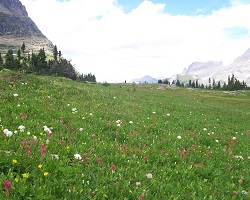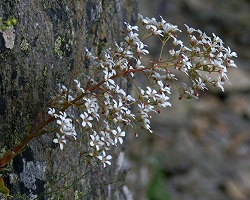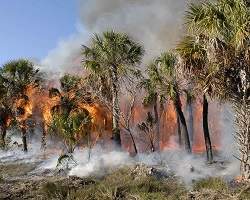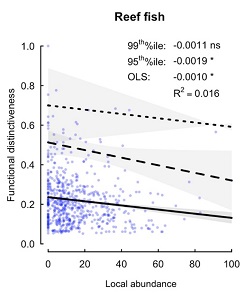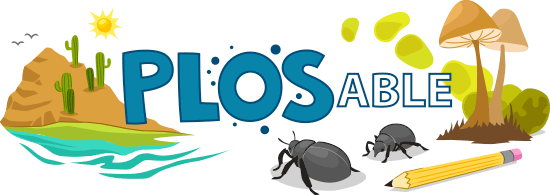
Rare Species Work Hard
show/hide words to know
Ecosystem: a group of different plants and animals that live together and are dependent on the area in which they live.
Resources: things animals, plants, and people need to survive. This includes things like water, air, and energy.
Statistics: a part of mathematics involving the collection, organization, and understanding of information based on numbers... more
What’s in the Story?
If you start listing different kinds of jobs, you might include those done by people all over the world, like policemen, nurses, or teachers. Policemen and nurses are common because they are important for helping to keep people safe and healthy, but there are many other jobs that also help our communities.
Jobs that are not likely on your list are the important jobs done by plants and animals. One such job that is done all over the world by animals is pollination. Some birds, bats, and insects are pollinators. They are needed because they help spread pollen from one flower to another. This helps plants to reproduce. While pollination is important, there are many other jobs done by specialized plants and animals that we don’t hear as much about.
Scientists used to think that if a species was rare, then their job was not as important compared to the jobs of the more common animals. In the PLOS Biology article, “Rare Species Support Vulnerable Functions in High-Diversity Ecosystems,” scientists studied how the jobs of rare species help to support the ecosystem.
Why Are Rare Species Important?
You can think of an ecosystem kind of like a soccer team. In soccer, some players play offense and other players play defense. The offensive players try to score goals, and the defensive players try to stop the other team from scoring goals. Every person on the field has a specific job.
Every soccer team also has a goalie. The goalie is very important because she is the only person who can use her hands to stop goals. If your team didn’t have a goalie, the defensive players could try to do the goalie’s job, but it would still be a lot easier for the other team to win. This is just like the ecosystem. Even if only a small number of plants or animals do one job, this job can still be very important to the whole ecosystem.
Scientists call a species “rare” if it only lives in a small area and only a few of those small areas exist in a larger region. Some of these rare species are in danger because humans are changing habitats by cutting down forests or creating pollution. Because of this, some rare species are already disappearing. Scientists began to wonder about what happens when a rare species disappears. Do rare plants and animals do the same jobs as more common species? Or do they do special jobs that other species can’t do?
Exploring the Ecosystem
To figure this out, the scientists looked at sets of data from three very different ecosystems. These included species of fish living in coral reefs, plants growing in the mountains, and trees growing in tropical forests. In each of these ecosystems, scientists looked at species that were the most rare.
Scientists decided if species were rare based on how difficult they were to find in each area. For example, they examined a certain species of plant that grows on cliffs. This plant provides an important food source for pollinators like bees. Another species of tree that grows in the tropical forests in South America, called Pouteria maxima, has very sturdy leaves and tough bark. Forest fires occur frequently in these areas, and the tough bark helps to protect these plants from fire.
Within each ecosystem, scientists looked at the traits of each species and only used the ones that had very unique traits compared to other species. This was important because it meant that this species was the only one to do a certain job in its ecosystem.
Rare Species, Big Jobs
Scientists used a statistical test to see if rare species usually had unique jobs. A statistical test is used to compare groups of data to one another. They found that rarer species were more likely to have a unique job. One more statistical test showed that these unique jobs were also very important for the survival of the ecosystem.
Overall, the scientists discovered that rare species often do special jobs that more common species can’t do. More importantly, they found that the special jobs of the rare species were much more important for keeping the ecosystem healthy. This was true for the 3 different ecosystems they looked at in their experiment.
These discoveries show the importance of rare species. If certain rare species go extinct, other plants and animals that depend on them might go extinct, too. This could lead to certain ecosystems becoming less healthy, or even being destroyed.
How Can You Help?
You can help out these hardworking rare species in lots of different ways. First, you can learn more about rare species and the ecosystems in which they live. Then you can teach your friends and parents about what you learned so they too can understand why rare species and their homes are important. You can also help out rare species by helping the earth.
You share resources like food and water with all of the other humans, but the rare species need some of these resources too. If we use fewer resources, there will be more resources available for other people and rare species to use to survive. A few ways you can use fewer resources is by using less water, recycling, and turning off the lights when you leave a room. This will help rare species keep doing their important jobs and will help keep our planet healthy.
Additional images via Wikimedia Commons. Coral reef by Toby Hudson.
View Citation
Bibliographic details:
- Article: Rare Species Work Hard
- Author(s): Natasha Coult
- Publisher: Arizona State University School of Life Sciences Ask A Biologist
- Site name: ASU - Ask A Biologist
- Date published: October 15, 2014
- Date accessed: April 17, 2024
- Link: https://askabiologist.asu.edu/plosable/lonely-species-work-hard
APA Style
Natasha Coult. (2014, October 15). Rare Species Work Hard. ASU - Ask A Biologist. Retrieved April 17, 2024 from https://askabiologist.asu.edu/plosable/lonely-species-work-hard
Chicago Manual of Style
Natasha Coult. "Rare Species Work Hard". ASU - Ask A Biologist. 15 October, 2014. https://askabiologist.asu.edu/plosable/lonely-species-work-hard
Natasha Coult. "Rare Species Work Hard". ASU - Ask A Biologist. 15 Oct 2014. ASU - Ask A Biologist, Web. 17 Apr 2024. https://askabiologist.asu.edu/plosable/lonely-species-work-hard
MLA 2017 Style
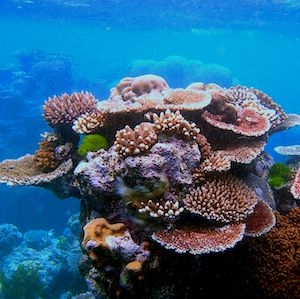
Be Part of
Ask A Biologist
By volunteering, or simply sending us feedback on the site. Scientists, teachers, writers, illustrators, and translators are all important to the program. If you are interested in helping with the website we have a Volunteers page to get the process started.







